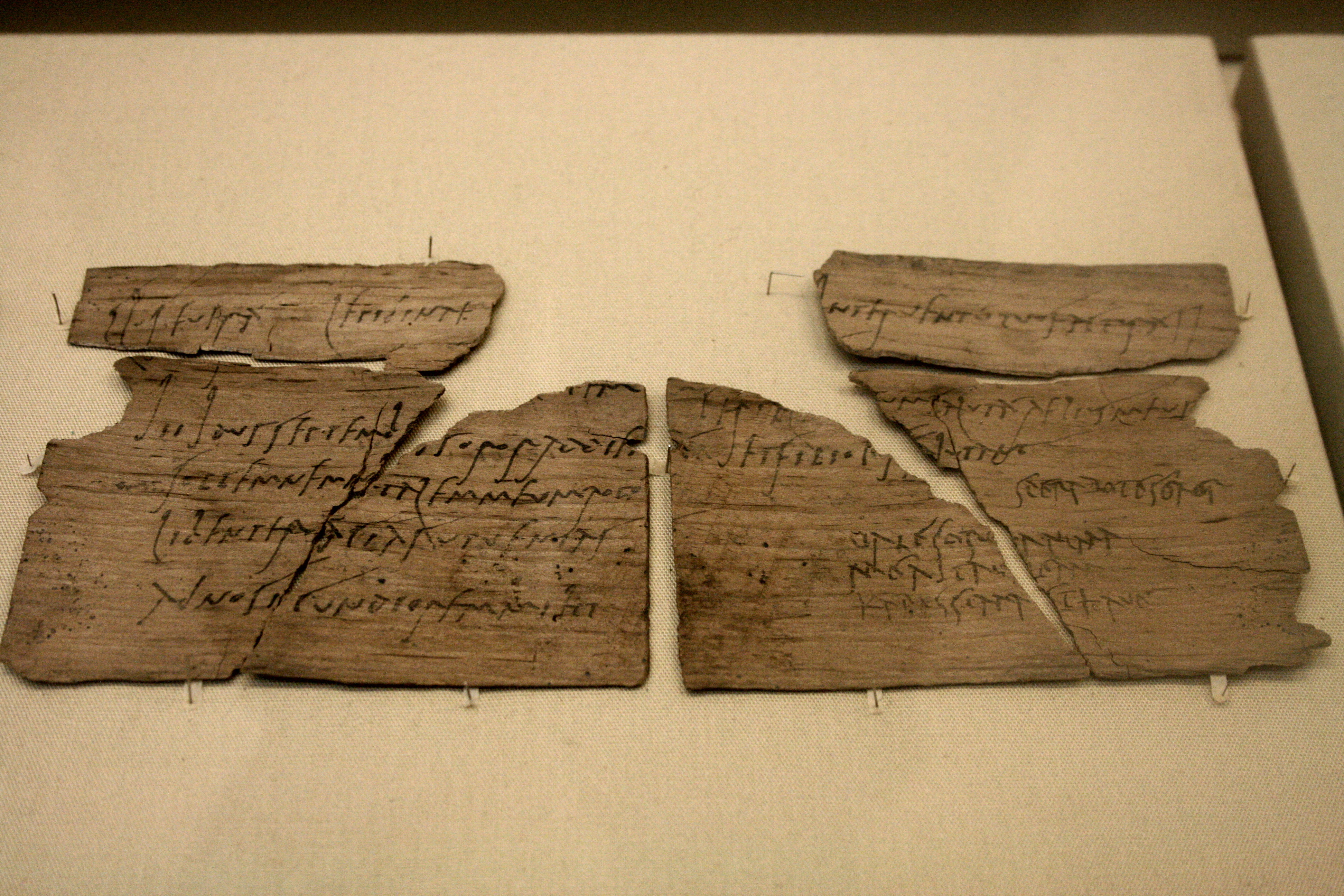Sulpicia Lepidina on:
[Wikipedia]
[Google]
[Amazon]
Sulpicia Lepidina was the wife of Flavius Cerialis,
 Sulpicia Lepidina received two letters from
Sulpicia Lepidina received two letters from
Vindolanda Tablets Online: Correspondence of Lepidina: tablets 291-294
{{DEFAULTSORT:Lepidina, Sulpicia 1st-century Roman women 1st-century Romans 2nd-century Roman women Ancient Romans in Britain Hadrian's Wall People from Northumberland Sulpicii
Prefect
Prefect (from the Latin ''praefectus'', substantive adjectival form of ''praeficere'': "put in front", meaning in charge) is a magisterial title of varying definition, but essentially refers to the leader of an administrative area.
A prefect' ...
of the Ninth Cohort of Batavians, stationed at Vindolanda
Vindolanda was a Roman auxiliary fort ('' castrum'') just south of Hadrian's Wall in northern England, which it pre-dated. Archaeological excavations of the site show it was under Roman occupation from roughly 85 AD to 370 AD. Located near th ...
in Roman Britain
Roman Britain was the territory that became the Roman province of ''Britannia'' after the Roman conquest of Britain, consisting of a large part of the island of Great Britain. The occupation lasted from AD 43 to AD 410.
Julius Caes ...
in the early 2nd century AD. She is known from her correspondence, including a birthday invitation she received from Claudia Severa
Claudia Severa (born 11 September in first century, fl. 97–105) was a literate Roman Empire, Roman woman, the wife of Aelius Brocchus, commander of an unidentified fort near Vindolanda fort in northern England. She is known for a birthday invit ...
.
Description
 Sulpicia Lepidina received two letters from
Sulpicia Lepidina received two letters from Claudia Severa
Claudia Severa (born 11 September in first century, fl. 97–105) was a literate Roman Empire, Roman woman, the wife of Aelius Brocchus, commander of an unidentified fort near Vindolanda fort in northern England. She is known for a birthday invit ...
, wife of Aelius Brocchus, commander of a nearby fort. One of the letters from Severa is an invitation to a birthday party, which is perhaps the best-known of the Vindolanda tablets
The Vindolanda tablets are some of the oldest surviving handwritten documents in Britain (antedated by the Bloomberg tablets from Roman London). They are a rich source of information about life on the northern frontier of Roman Britain. Writ ...
now at the British Museum
The British Museum is a Museum, public museum dedicated to human history, art and culture located in the Bloomsbury area of London. Its permanent collection of eight million works is the largest in the world. It documents the story of human cu ...
.
The invitation is partly written by a scribe and partly by Severa herself. Along with another tablet (a fragment with a closure written in Severa's hand), the invitation is thought to be the oldest extant writing by a Roman woman found in Britain, or perhaps anywhere. The subject-matter of the letters is social and personal, and Severa calls Lepidina her sister.
Sulpicia Lepidina also received a letter from another woman. While the name of the woman is difficult to read, the subject matter is legible. In this letter the woman, thought to be called Paterna, speaks either of remedies that she plans to bring to Lepidina, or else two ancillae, enslaved girls, free from fever, are to be brought, one for Lepidina and one for someone whose name is lost from the text. The text of this tablet is too damaged to be able to determine which of these translations is correct.
The letters were written in ink on wooden tablets found during excavations at Vindolanda in the 1970s. Vindolanda was a Roman fort built where two streams conjoined and, as a result, the floors of the fort were thick with mosses, bracken and straw. The Vindolanda tablets were found in this thick carpet and filled-in ditches. Their preservation was due to the waterlogged soil conditions on parts of the Vindolanda site.
See also
*Sulpicia gens
The gens Sulpicia was one of the most ancient patrician families at ancient Rome, and produced a succession of distinguished men, from the foundation of the Republic to the imperial period. The first member of the gens who obtained the consulsh ...
Notes
References
External links
Vindolanda Tablets Online: Correspondence of Lepidina: tablets 291-294
{{DEFAULTSORT:Lepidina, Sulpicia 1st-century Roman women 1st-century Romans 2nd-century Roman women Ancient Romans in Britain Hadrian's Wall People from Northumberland Sulpicii